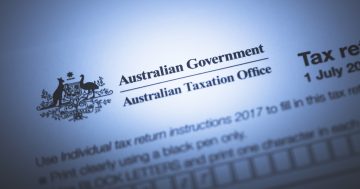 The Australian Taxation Office (ATO) is to target claims for work-related laundry expenses this year which it says costs it around $1.5 billion in returned tax payments annually.
The Australian Taxation Office (ATO) is to target claims for work-related laundry expenses this year which it says costs it around $1.5 billion in returned tax payments annually.
Assistant Taxation Commissioner Karen Foat said that in 2018, around six million people claimed work-related clothing and laundry expenses in their tax returns.
“It was unlikely that half of all taxpayers were required to wear uniforms, protective clothing or occupation-specific clothing to earn their income,” Ms Foat said.
“You must have spent the money you are claiming on buying or cleaning eligible clothes.”
She said that while claimants didn’t need receipts for claims up to $150, the ATO can ask how they calculated their claims.
“We may even ask your employer if you have a required uniform,” she said.
She said that last year a quarter of all clothing and laundry claims were exactly at the record-keeping limit.
“Don’t think that we won’t scrutinise a claim because we don’t require receipts,” she said.
Ms Foat said the ATO was also concerned about the number of people claiming deductions for conventional clothing.
“Some retail workers claim normal clothes because their boss told them to wear a certain colour, or items from the latest fashion clothing line,” she said.
“Others think they can claim normal clothes because they only wear them to work.
“Your workplace may expect you to wear clothing items like suits or black pants, but an official ‘dress code’ doesn’t qualify as a uniform and you can’t make a claim for normal clothing, even if your employer requires you to wear it, or you only wear it to work.”
She said the ATO’s data analytics would flag claims that were significantly above the average in occupations that regularly claim for laundry, like chefs or security guards.
She said it would also flag claims made by people in occupations that usually don’t claim, like office workers.
Ms Foat said taxpayers who can’t substantiate their claims should expect to have them refused, and may be penalised for failing to take reasonable care when submitting their tax return.










